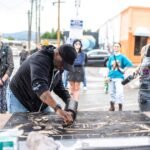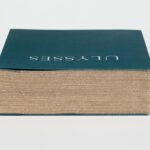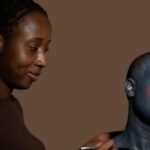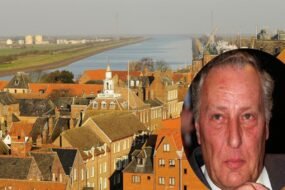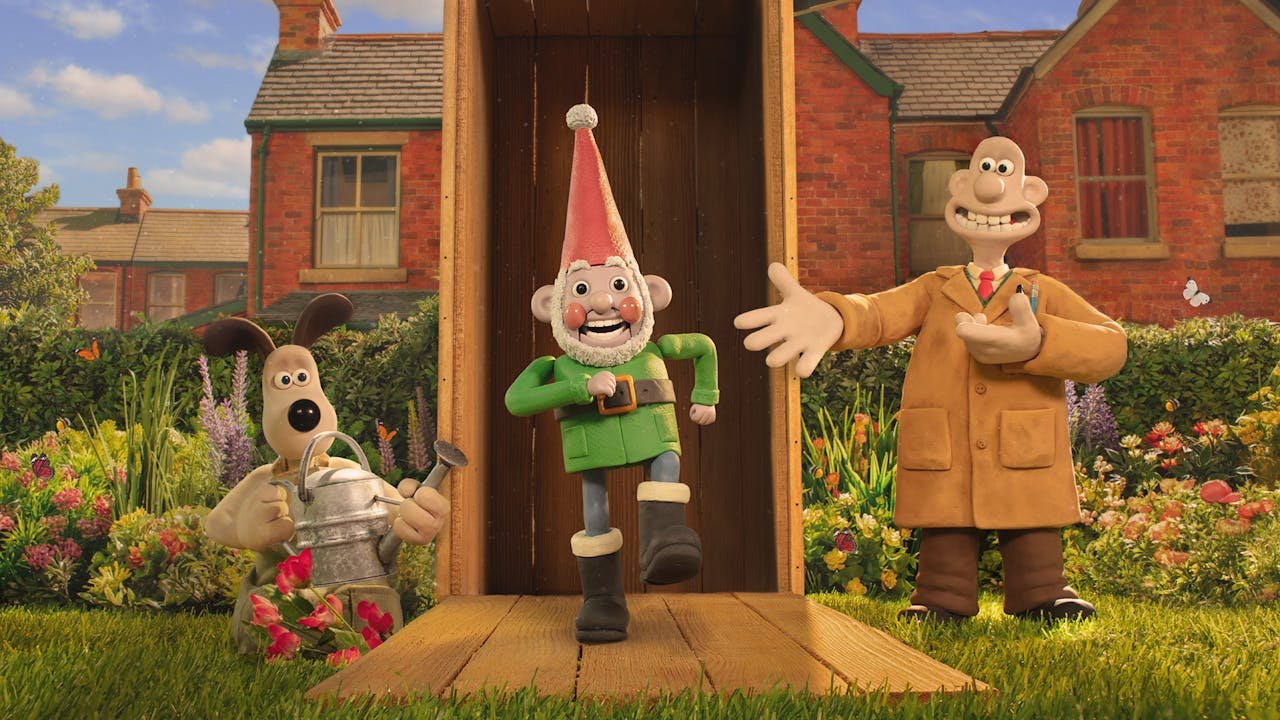
Every now and again in this line of work, you meet someone with a creative energy that is applied to unrelated endeavors as broad as animation, music and product design.
Gavin Strange has taken a largely autodidactic learning approach to most of what he’s picked up. Outside of animation studio Aardman’s commercial and film work, he finds an unbridled outlet for his own ideas under the name Jamfactory, sometimes for the fun of it and other times as part of a commissioned gig.
Behind the studio doors
Based in Bristol, Strange is one of around 300 people working for Aardman across two sites. “We have our waterfront HQ and then our sister site up the road, which is a big industrial building where the magic happens, like the stop frame movies,” he says.
Beyond that, the company grows and shrinks around projects. “When Wallace and Gromit: Vengeance Most Fowl was being shot, we were 500+ people,” says Strange, who sits in the development team with 20 people, “developing series and films.”
Want to go deeper? Ask The Drum
This work covers commercial briefs and films. It is overseen by chief creative director Sarah Cox, who decides which creative leaders are best suited to each project.
“Sometimes it’s an internal project, like Shaun the Sheep, or Apple came to us once for the ‘Shot on iPhone’ project, but it could be that a client wants something completely new.”

Structurally, “knowing each other’s skills and strengths across the team” helps, according to Strange, who says that staff are also pulling in the same way due to the studio having been “employee-owned since 2018, which means everyone cares and wants to do well.”
This attitude lends itself to a personal sense of flexibility for Strange, who says: “Whether I’m a graphic designer on a project working for another director or directing and leading a team of 70, I’m just as excited.”
He shares a snapshot of some in-film graphics he designed for Vengeance Most Fowl. In it, the protagonist and inventor Wallace creates a “smart gnome,” Norbot, that is hacked and becomes evil. In one scene, we see Norbot’s code. Strange drew on the visual language of the early 2000s to create an interface for this and hid his children’s names in the code, as well as the song Heads, Shoulders, Knees and Toes just to amuse himself.
Aardman’s charm, lightness and joy
When it comes to commercial work, there are four things he thinks people come to Aardman for: “Comedy, character, story and craft.” Expanding on this, he reasons: “There’s a charm, lightness and joy to what we do.”
While the creative team also want to be making “subversive and strange stuff,” which there is sometimes an avenue for at Aardman, generally it’s the character and comedy side that comes to the fore. “Particularly if we’re working with commercial partners, they tend to love the stop frame animation and tactility and so do we, as animating by hand one frame at a time just feels like magic.”
Although Strange says he doesn’t have a signature style, he has spent the last decade trying to find his creative voice. “I’ve been trying to tune into it for the last decade or so.”
In the case of a 2019 Greenpeace spot that looked to address biodiversity loss in the ocean, Strange found inspiration in his relationship with his newborn son as he directed the story of a family of turtles.

Ghibli ChatGPT trend could have been Aardman
While it might seem churlish to get into a conversation about AI with a senior Aardman employee, we do touch on the recent Studio Ghibli ChatGPT trend and how it could have been Aardman’s style that got copied and went viral.
Speaking for himself rather than Aardman, Strange says: “Ultimately, it’s a choice whether people are going to choose to engage with this stuff or not.”
Reflecting on what he has created with Aardman, Strange says: “I love the mistakes, the process and the context. Again, Ghibli is famous for making painstaking, meticulous craft with nuance and subtlety. To skip to the end result misunderstands the point of what makes it great”.
It’s Strange’s hope that incidents like the Ghibli ChatGPT trend “highlight the importance of human craft.” Aardman’s world, he says, “is not anti-technology,” adding: “We shoot on digital cameras and have a brilliant compositing and VFX team.”
Elsewhere, Strange has his own avenues for more experimental work, which he does under the moniker Jamfactory – an outlet that has followed him throughout his career and which he spoke about this at the D&AD Festival last week, where in a high-energy presentation he whipped the crowd up while reflecting on designing and making, touching on the personal benefits of this.
“I just like making stuff, I’ll make absolutely anything. Things that no one asks for, that no one’s commissioning.”

There’s a real range to the scale of his self-initiated work, as well as the medium. At the micro-end, he has made wildly imaginative party invites for his children’s birthdays, including painstakingly changing the backs of Hot Wheels packaging to a bespoke version. “Did the kids care about what some idiot graphic designer had done? Of course not,” he says. There are many examples like this, including Pinplo, a giant Nintendo Switch-powered pinball machine made out of Lego.

The motivation for Strange is to make just because you can and to do it for yourself: “Just make things exist”, he urges, “The universe doesn’t want us to create.”

Strange, who has two children and describes himself as time-poor, advocates the power of finding or making time. His Jamfactory projects are crammed into the hours of 9.30pm-11.30pm on Mondays to Thursdays so he can spend other evenings and weekends with his family.

At the other end of the spectrum, Strange worked on a Jamfactory project for the Beyond Tellerrand conference in Düsseldorf. For each speaker, he created live interactive graphics. This consisted of a visual that was triggered by a soundscape created by Strange, live. Each speaker had their own audio-visual signature, which was brought to life by his live music. It’s probably worth watching this video before moving on.

If you’re wondering how it actually works, he says: “I started off with Adobe Illustrator, giving each speaker their own design. Then I split up all the layers into PNGs, fed those into Unity, the game engine, and stacked them all up. Then I used this music-making device by Teenage Engineering that sends MIDI signals to Unity. For example, when a kick drum occurs, it would pull layer three of a speaker’s head shot and scale it on screen.”
He says the project played to his main strengths of graphic design, typography and layout “all in a sort of web 1.0 style, which was going back to my early influences like [renowned studio] Designer’s Republic and club flyers”.
Suggested newsletters for you
Start something, even if it’s small
As he approaches 25 years of Jamfactory next year, his next project might be a book, which, perhaps unsurprisingly, he thinks he’ll design and self-publish.
With his message of making, Strange says he’s really speaking to “anyone who thinks they’re not good enough.” While he sees himself as short of time but well-resourced, he might be appealing to people who have time but limited resources. “You might live at home or on your own and be someone who doesn’t want to start making because you’re feeling overwhelmed or terrified, but you just need to stay enthused and positive and start something, even if it’s small.”

